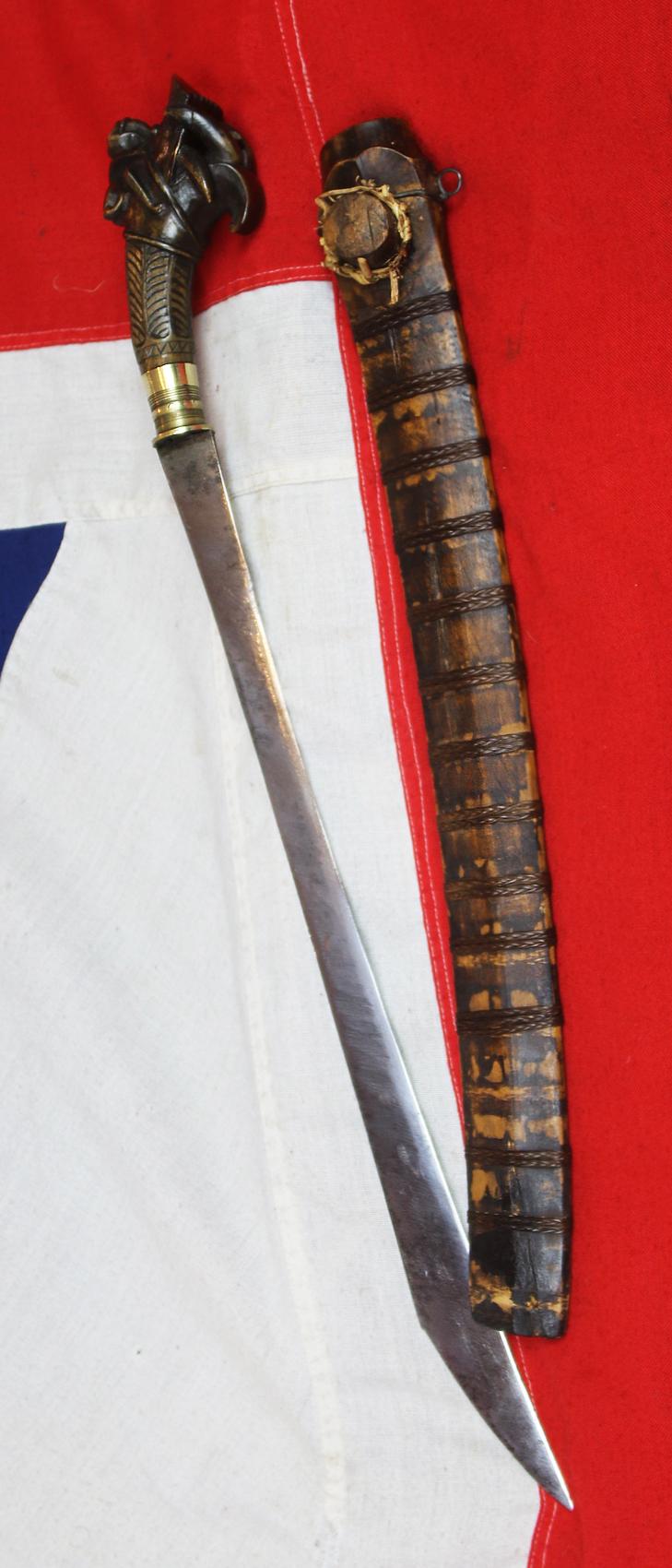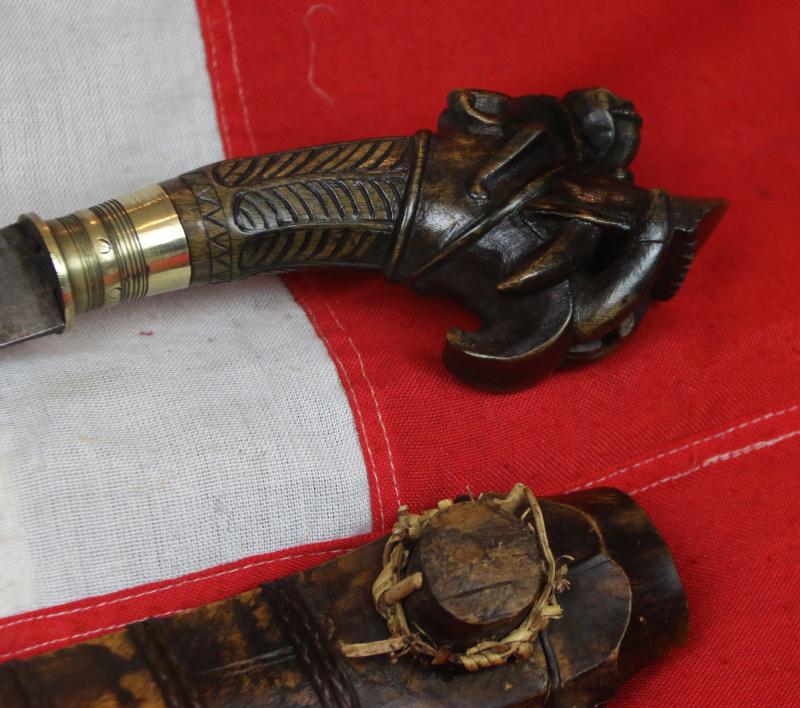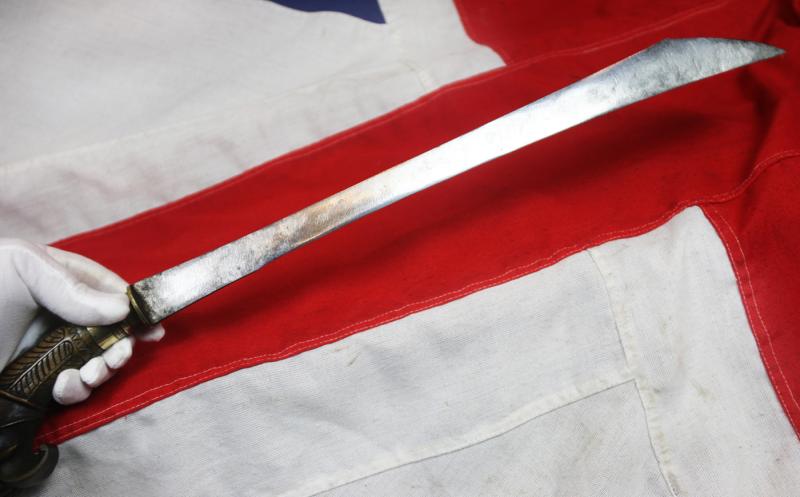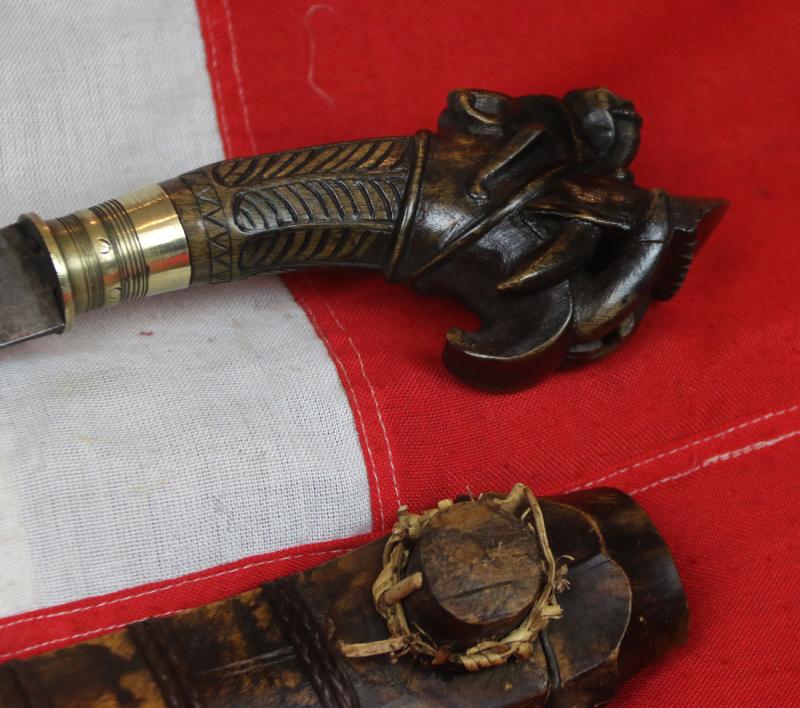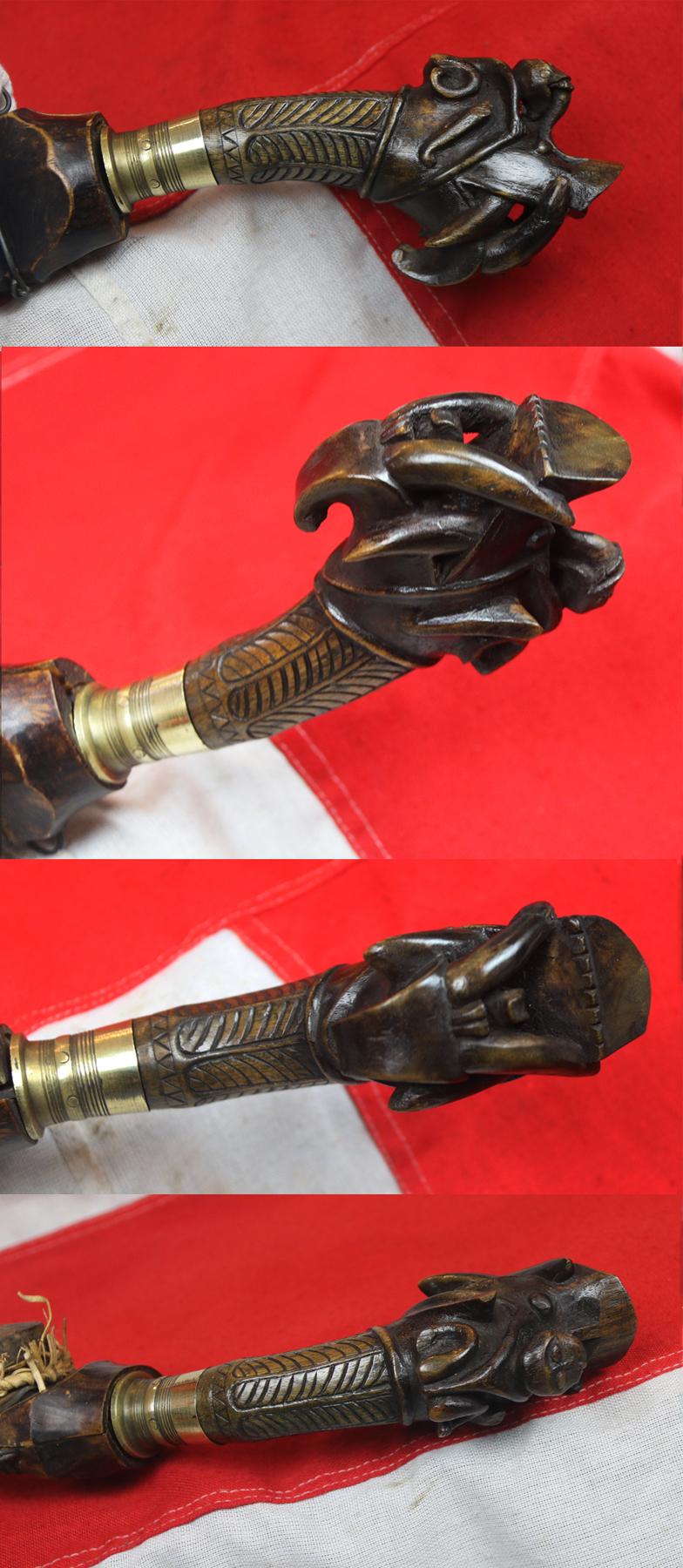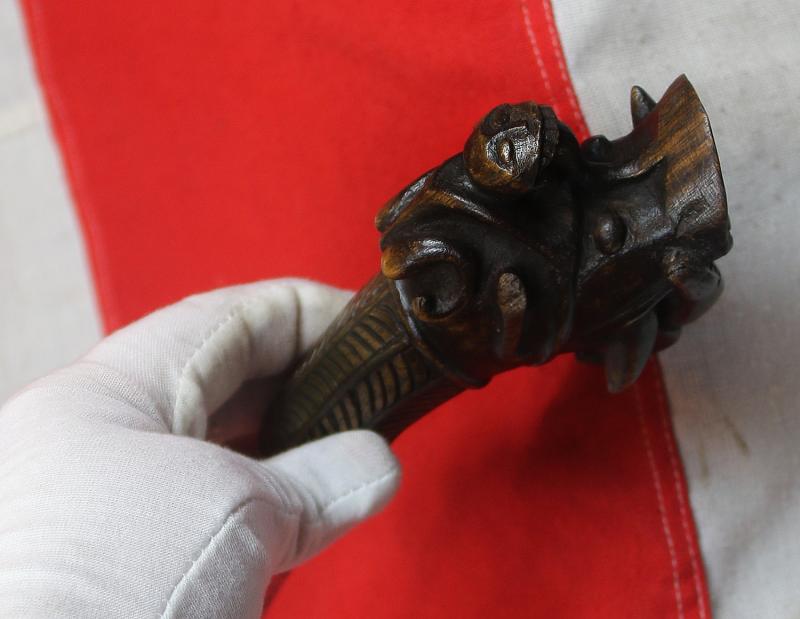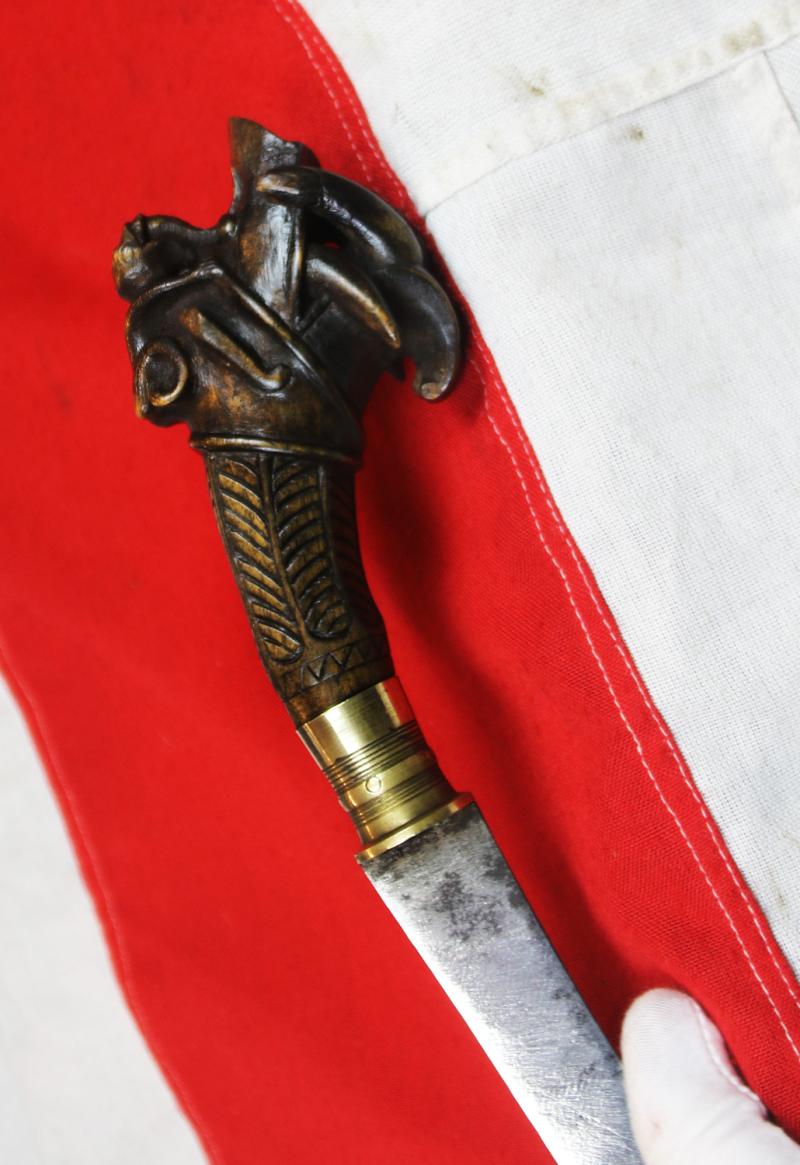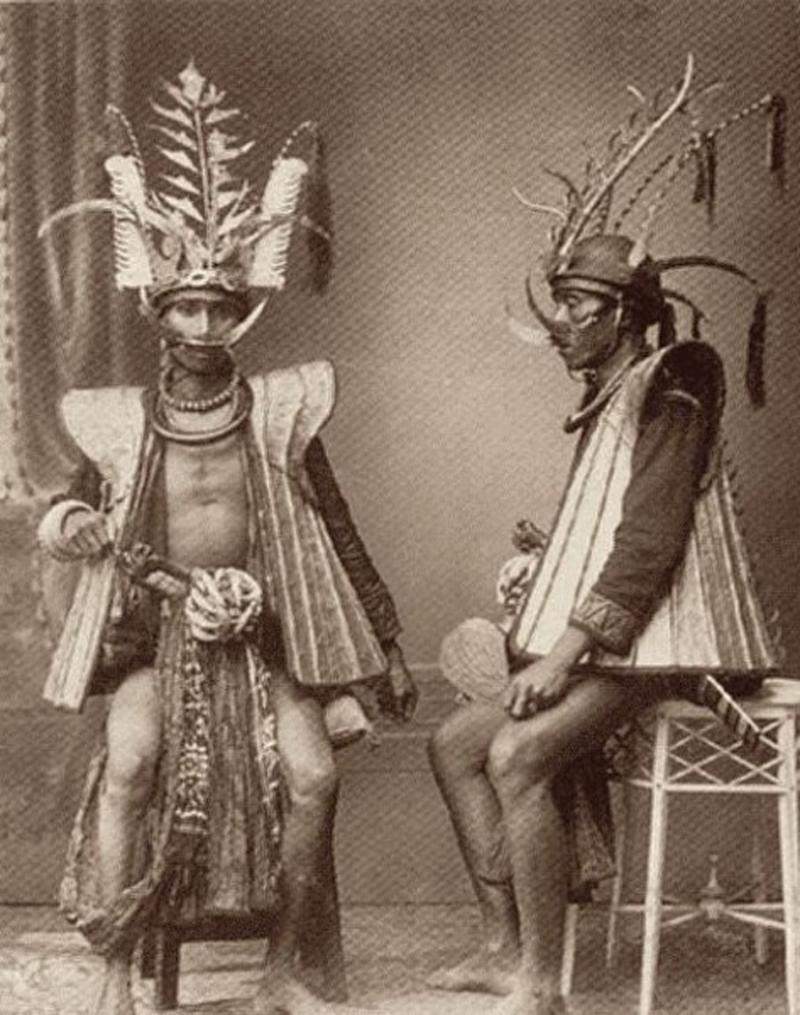An Original Indonesian Nias Balato Dragon Head Hilted Dayak Headhunters Sword., Lasara Dragon Hilt with a Small Creature Sitting Astride The Back of The Lasara, Called a Bechu Zocha, a Spirit Who Hunts and Feeds on Men's Shadows
Likely originally sourced from a native trading bazaar or souk in the earlier part of the last century, as the Dayak headhunter Nias tribesmen rarely part with their headhunting sword directly to foreign visitors.
Just returned from four days hand conservation, throughout the sword and scabbard, in our workshop.
A sword of the Nias islands near Sumatra, this sword is called a balato and is of the classic balato form but with the distinctive carved hilt in the form of a dragonhead called a Lasara. This relatively typical balato has a form that closely follows the design of the Lasara (dragon head) hilt and which can be seen illustrated in Modigliani (1890) and Fischer (1909).
While the classic balato is considered to be a traditional headhunters sword, and the knife of the Nias takes a similar but smaller form. The headhunters swords are distinguished by their longer blades, such as this example. The blades are generally not laminated and can have various forms, the common factors are: a single edge that starts only a few centimetres from the hilt and more or less widening to the point. The Lasara carved hilts are found in varying degrees of quality with earlier examples being distinguished primarily by patina of usage on the wooden handles, and sometimes earlier and more distinctive handle shapes, some of which can be found in the Schmiedt Collection. The lasara form itself has been identified as multiple types of creatures including a law' bird (Horner 1849); nibawa law, an animal whose function is to increase the strength of the sabre's owner (Schrader 1917); boar's head (Modigliani 1890); but also potentially as a naga or Hindu Javanese sea serpent (Viaro 2001). The Schmiedt Collection example has a well carved handle with the Lasara form carved into the face of the pommel of the hilt and with a small creature sitting astride the back of the Lasara called a Bechu Zocha, a spirit who hunts and feeds on men's shadows, just as men feed on pigs. This image can be regarded as a talisman working against the misfortunes that the Bechu Zocha spirit would ordinarily bring (Brenner-Felsach 1998). This hilt form is called niobawa lawolo and is the most frequent type of hilt found and comes in a variety of forms from more realistic to abstract forms (Van Zonneveld 2001). The scabbard is of two pieces of wood secured with traditional strips of woven rattan, The protrusion at the top can hold an additional talismanic ball form open basket, a raga ifoboaya, it would be of classic shape formed of woven rattan, somewhat similar in look to an enclosed reed warbler bird's nest. The ball holds amulets,talismans of crocodile teeth, tiger teeth and.or boars teeth, and were special ju-ju for the warrior
The blade now with pitting from age. Balato are difficult to date accurately, but considering the style of carving of the hilt, the proportions of the bekhu figure, this example likely dates to the early part of the last century. Total Length within scabbard, 26.5" , Blade Length, 19"
References:1. Van Zonneveld, A.G. (2001) Traditional Weapons of the Indonesian Archipelago. Leiden: Art Books2. Viaro, M. A. (2001). Ceremonial sabres of nias headhunters in indonesia. Arts Et Cultures, 3, 150-171.3. Fischer, H.W. (1909) Katalog des ethnographischen Reichsmuseums- Die Inseln ringsum Sumatra, (vol. 4, Leiden)4. Modigiliani, E. (1890) Un viaggio a Nias.5. Brenner-Felsach, Joachim Freiherr von. Eine Reise nach Nias, die Indonesienexpedition 1887, edited by Reinhold Mittersakschmller, 171-75. Vienna: 19986. Schroder, E. E.W. S. Nias: Ethnographische, geographische en historische Aanteekeningen en Studin. 2 vols. Leiden: Brill, 1917.7. Horner, Johann Jakob. Batoe-Eilanden, ten Westen van Sumatra gelegen. In Tijdschrift voor Neerlands Indie. Batavia, 1840.
Reference; a Lanes Armoury *Special Conservation* Item, restored and conserved in our workshop, see info page for details on our conservation principles.
The price was 'as-is' but will be re-assessed once the final conservation cost is calculated, likely by Monday 3rd april
Code: 24677
675.00 GBP



